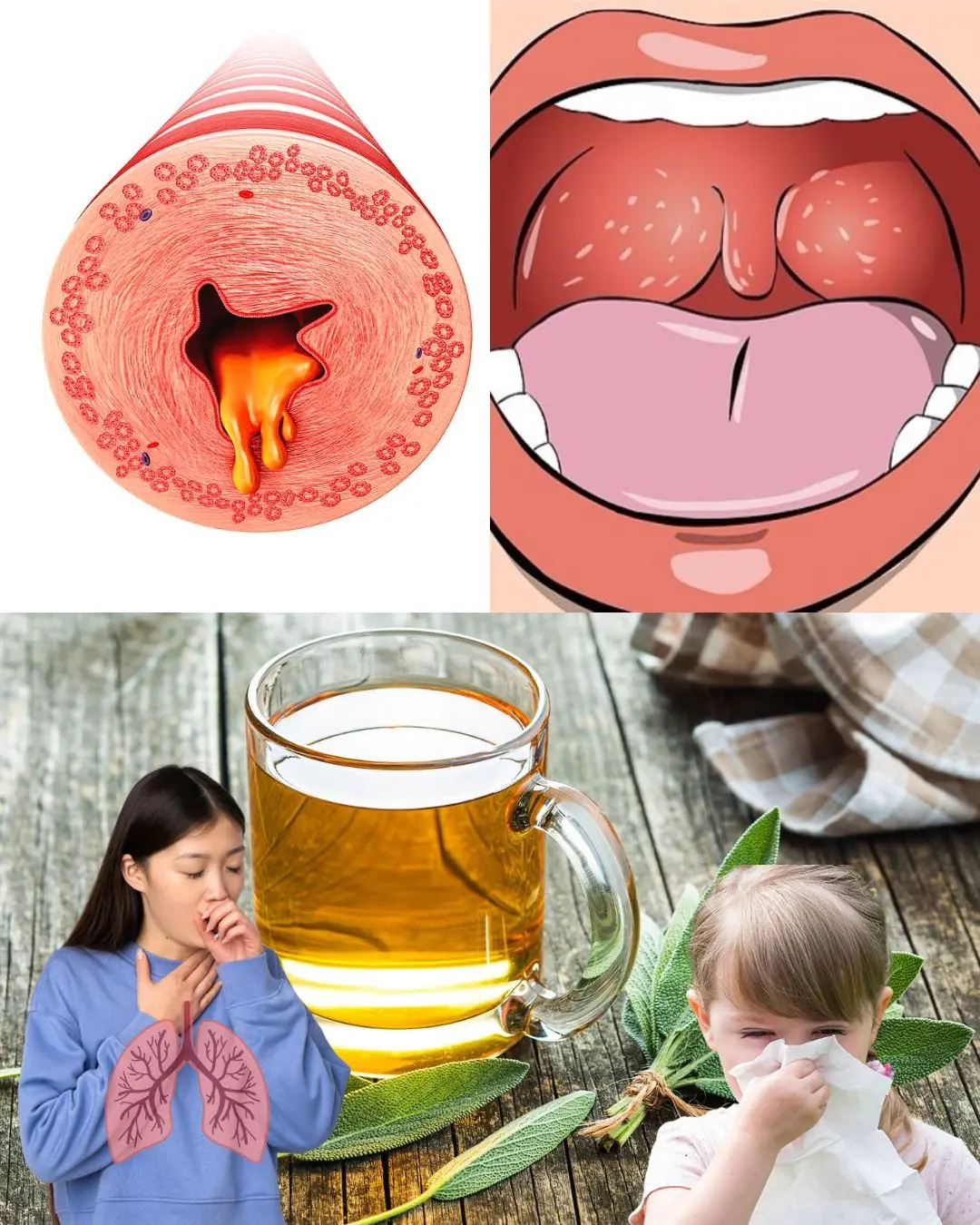
How Cancer Travels Through the Lymphatic System—and Ways to Keep It Strong
How Cancer Travels Through the Lymphatic System—and Ways to Keep It Strong
Cancer and the lymphatic system share a fascinating — and deeply important — relationship. The lymphatic system is one of the body’s major defense and detoxification networks. It runs parallel to the circulatory system, carrying a clear fluid called lymph that helps remove waste, toxins, and unwanted invaders from your tissues.
Unlike the bloodstream, which is powered by the heart, the lymphatic system has no central pump. Instead, lymph flows slowly through the body with the help of muscle movement, gravity, and breathing. This means that your level of physical activity directly affects how well your lymphatic system functions — and, by extension, how well your immune system performs.

What Is Lymph and Why It Matters
Lymph is a clear, slightly milky fluid rich in fats, immune cells, and proteins. It’s produced from fluids that leak out of your blood vessels and are collected by specialized lymphatic capillaries throughout the body. The lymph then travels through an intricate network of vessels, glands, and lymph nodes — small, bean-shaped structures that act as filters, trapping bacteria, viruses, cancer cells, and debris.
The system also includes lymphoid organs such as the spleen, thymus, tonsils, and bone marrow. Together, they produce and regulate white blood cells — mainly lymphocytes, which detect and destroy abnormal or infected cells.
Interestingly, the gut serves as the body’s largest lymphatic organ, housing nearly 80% of your immune cells in specialized lymphatic tissue. This connection between digestion and immunity is why gut health is so closely tied to inflammation, cancer risk, and overall vitality.
Cancer and the Lymphatic System
When lymph fluid passes through lymph nodes, lymphocytes inspect it for harmful invaders or damaged cells. They destroy bacteria, viruses, and potentially cancerous cells before the lymph is carried onward to the liver and kidneys for detoxification and eventual elimination.
However, when toxins or abnormal cells overwhelm this system, some manage to escape destruction. These can then circulate throughout the body, hitching a ride with the lymph fluid. If cancerous cells enter the lymphatic system, they can spread beyond their original site — a process known as metastasis.
That’s why lymph node biopsies are often part of cancer screening and diagnosis. If cancer cells are detected in lymph tissue, it’s a clear sign they’ve already begun traveling beyond the original tumor site, potentially reaching distant organs through both the lymphatic and circulatory systems.
Signs of a Sluggish Lymphatic System
When the lymphatic system becomes stagnant — often due to inactivity, dehydration, poor diet, or chronic stress — waste products can build up in tissues. This creates inflammation, slows detoxification, and weakens immune function.
Common symptoms include:
-
Persistent bloating or puffiness
-
Brain fog or sluggish thinking
-
Breast tenderness or swelling during menstruation
-
Cellulite buildup
-
Cold hands and feet due to poor circulation
-
Constipation or slow digestion
-
Dry or itchy skin
-
Chronic fatigue or lethargy
-
Leg discoloration or swelling
-
Morning stiffness or soreness
-
Swollen fingers or ankles
If several of these signs sound familiar, your lymphatic system might need a reset.
How to Keep Your Lymphatic System Flowing
A healthy lymphatic system is key to cancer prevention, strong immunity, and daily energy. Because it relies on movement and pressure changes — rather than a mechanical pump — lifestyle habits make a major difference in how efficiently it functions. Here’s how to support it naturally.
1. Exercise Regularly
Movement is the lymphatic system’s best friend. Each muscle contraction acts like a mini pump, helping push lymph through the vessels. Studies show that even moderate exercise can increase lymph flow 2–3 times compared to when you’re at rest.
One of the most effective activities for lymph drainage is rebounding — gentle bouncing on a mini-trampoline. Just 2–3 minutes at a time, several times a day, can dramatically improve circulation and fluid movement. Walking, yoga, swimming, and stretching also keep the system active.
2. Try Inversion Therapy
Inversions — positions where your head is lower than your heart — harness gravity to move lymph in the opposite direction. Inversion tables are excellent for this, but you can also benefit from simple yoga poses like Legs-Up-the-Wall (Viparita Karani), Shoulder Stand (Sarvangasana), or Downward-Facing Dog (Adho Mukha Svanasana). These postures allow lymph to drain toward the chest and heart, aiding detoxification and circulation.
3. Practice Deep Breathing
Your diaphragm is a natural lymphatic pump. Conscious deep breathing, especially diaphragmatic or yogic breathing (pranayama), compresses and releases lymphatic vessels in the chest and abdomen, stimulating flow.
Because the body contains more lymph fluid than blood, deep breathing ensures that the fluid keeps moving. Even a few minutes of slow, deep inhalations each morning can dramatically improve lymph flow and oxygenation throughout your body.
4. Dry Skin Brushing
Before your morning shower, use a natural bristle brush to gently brush your skin in long strokes toward the heart — from feet to thighs, and from hands to shoulders. This stimulates the lymph vessels under the skin, improves circulation, and helps exfoliate dead skin cells.
After brushing, take a warm shower to rinse off the toxins that have been drawn to the surface. This simple habit supports both internal and external detoxification.
5. Stay Hydrated
Lymph is a fluid — and like any liquid, it thickens when dehydrated. Drinking enough clean, filtered water throughout the day keeps your lymph thin and flowing smoothly. Warm water and herbal teas (especially nettle, ginger, or dandelion tea) can further support lymphatic cleansing and digestion.
6. Get a Lymphatic Massage
A gentle lymphatic drainage massage, performed by a trained therapist or even at home with the right technique, encourages lymph movement and reduces swelling. It also eases muscle tension and stress — both of which can hinder lymph flow.
Chronic stress constricts blood vessels and slows detoxification. Massage helps relax the nervous system, promoting better circulation and immunity.
7. Support with Iodine-Rich Foods
Iodine deficiency can interfere with both thyroid and lymphatic function. Adding natural sources such as seaweed (dulse, kelp), Himalayan salt, beets, and mushrooms can help regulate metabolism and improve the body’s ability to remove toxins.
8. Eat Red and Antioxidant-Rich Foods
Nature’s red foods — like pomegranates, cherries, beets, berries, and red grapes — are rich in anthocyanins and polyphenols, powerful antioxidants that protect blood vessels and stimulate lymphatic circulation. These phytonutrients also help prevent oxidative stress, one of the cellular processes linked to cancer formation.
9. Clean Up Your Diet
Your diet directly determines how well your lymphatic system performs. Processed foods, refined sugars, artificial additives, and pesticide-laden produce overload the body with toxins, thickening the lymph and slowing detoxification.
Choose whole, organic foods whenever possible — especially fresh fruits and vegetables. According to Ayurvedic wisdom, eating seasonal fruits on their own (not combined with heavy meals) supports efficient lymph cleansing.
By reducing chemical stress and providing your body with nutrient-dense fuel, you allow your lymphatic system to do what it was designed for: cleansing, nourishing, and protecting your cells.
The Bottom Line
Your lymphatic system is one of the most powerful — yet overlooked — systems in your body. It’s the gateway between your immune system and your detox system, quietly protecting you from infection and disease every moment of your life.
When lymph flow is strong, your immune system is resilient, your energy levels rise, and your risk of chronic disease decreases. But when it’s stagnant, toxins accumulate, inflammation grows, and harmful cells can take hold and spread.
By moving your body, eating cleanly, hydrating, and practicing simple daily habits like deep breathing and dry brushing, you can keep your lymphatic system flowing freely — and in doing so, help your body defend itself naturally against cancer and countless other illnesses.
Just because you can’t see your lymph doesn’t mean it’s not working hard for you. Give it the care it deserves — and it will keep you healthy from the inside out.
News in the same category


How to Make Alkaline Water to Fight Fatigue, Digestive Issues, and Disease

Your Legs Have a “Second Heart” — And One Simple Move Can Reactivate It Fast

A neurosurgeon says your legs could predict dementia years before memory loss

Simple Homemade Cough Syrup Removes Phlegm From The Lungs

The B vitamin solution: lower blood pressure when medications fail

The #1 habit that’s destroying muscle in older adults—are you doing this?

The Hidden Consequences of a S*xless Life

This carb is more damaging to your blood sugar than pure sugar

DIY Under-Eye Clove Cream for Dark Circles

The Powerful Juice That Fights Anemia, Fatty Liver, and Blurry Vision Naturally

Remove Bad Odors from Your Refrigerator Overnight with These Simple Tricks

Castor Oil After 50: This Is What Happens After 7 Days Of Use!

Mix One Ingredient With Orange Juice To Flush Toxic Buildup From The Lungs

Drink one cup daily of this juice to UNCLOG arteries?

MISTAKE #1 WHEN CHEWING CLOVES (YOUR HEALTH IS IN DANGER)

Just tried to stop my daughter from doing this

Found this weird skin on my son's ear this morning. Doc appt is a week away. What can I do?

3 Common Mistakes People Make When Eating Avocados
News Post

Boil chicken without water, use vegetables and fruits to "cook", ensure to keep the sweetness and very fragrant

Excess beer if thrown away is a waste

Don't think only beef is good for blood; 11 types of fruit rich in iron, regenerate blood; better than supplements

Drinking coconut water on an empty stomach for 7 days, one shot hits 10 targets: it's too wasteful not to try.

Simple way to repel cockroaches: Use only 1 ingredient available in the house

How to drink ginger and red apple tea to nourish blood, rosy skin, and good sleep

Put a drop of essential oil on clothes while soaking: "Special" use, not everyone knows how to apply it

5 Early Signs of Poor Circulation (and How to Boost Blood Flow)

How to Make Alkaline Water to Fight Fatigue, Digestive Issues, and Disease

Your Legs Have a “Second Heart” — And One Simple Move Can Reactivate It Fast

Don't throw away expired milk, keep it for 7 great benefits, help save a lot of money

How to make lemon syrup with a rice cooker to help treat coughs and nourish the lungs

Don't rush to put lemons in the fridge when you buy them. Do this so they stay fresh all year round and don't get bitter or spoiled.

Tips to unclog drains in 5 minutes, removing hair and dirt without calling a plumber

Ancient Herbal Remedy to Clear Mucus from Nose, Throat, and Lungs in Just 2 Days

Seniors: Take This for 5 Nights and See What Comes Out in Your Stool!

A neurosurgeon says your legs could predict dementia years before memory loss

Simple Homemade Cough Syrup Removes Phlegm From The Lungs
